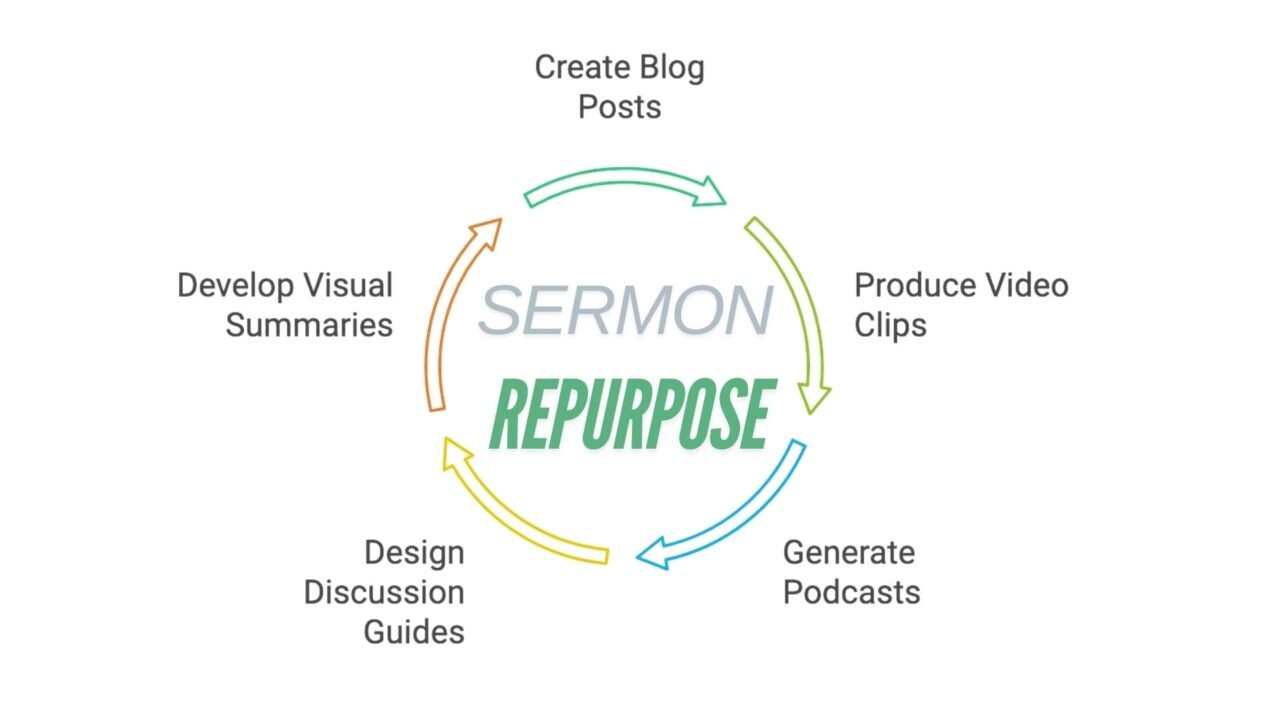Each week, pastors and church leaders deliver powerful messages designed to inspire, challenge, and encourage their congregations. But what if the impact of those sermons could extend beyond Sunday? Repurposing sermons is an excellent way to reach a broader audience and offer members a chance to revisit teachings. Here are five practical ways to maximize the reach of each sermon.

1. Turn Sermons into Blog Posts or Devotionals
Overview: Sermons are often filled with rich insights, key scripture references, and practical applications. Repurposing them into written blog posts or devotionals can give your congregation an easy way to revisit the message.
How to Do It: Break down a sermon into sections, focusing on specific points or themes, and expand each section into a blog post. For example, a sermon on the “Armor of God” could turn into a series, with each post focusing on one piece of armor.
Benefits: Written content allows readers to engage at their own pace, ideal for personal reflection or group study. Plus, blog posts are easily shareable on social media, reaching individuals who might not have attended the service.
2. Create Short Video Clips for Social Media
Overview: Attention spans are short, especially on social media. By creating short, impactful video clips from sermons, you can engage viewers and encourage them to explore the full message.
How to Do It: Identify the most quotable or thought-provoking parts of the sermon and edit them into 1–2 minute clips. Include closed captions for accessibility and post on platforms like Instagram, Facebook, and YouTube.
Benefits: These clips can attract a broader audience, encourage engagement, and offer a quick spiritual boost to followers throughout the week.
3. Start a Podcast or Audio Devotional Series
Overview: Audio content is perfect for people on the go. Repurposing sermons into podcasts or short audio devotionals gives listeners flexibility in engaging with messages anytime, anywhere.
How to Do It: Publish each sermon in full or edit it into shorter audio segments. Platforms like Spotify, Apple Podcasts, and Google Podcasts make it easy to reach a global audience with these audio devotionals.
Benefits: Podcasts allow people to stay connected with the church’s teaching while commuting, working, or exercising, expanding your reach and deepening spiritual engagement.
4. Develop Discussion Guides for Small Groups
Overview: Small groups thrive when they have structured resources that encourage meaningful discussions. Sermons provide a ready-made foundation for creating discussion guides that inspire deeper study and fellowship.
How to Do It: Transform sermon points into a discussion format with questions, application prompts, and relevant scripture references. Encourage group leaders to use these guides in weekly gatherings.
Benefits: Discussion guides foster community and reinforce the sermon’s message, helping members apply the lessons practically in their daily lives.
5. Design Visual Sermon Summaries (Infographics or Slides)
Overview: Visual learners will benefit from summaries that highlight the main points and scriptures from each sermon. Infographics or slide decks make the message accessible and easy to share.
How to Do It: Condense each sermon into a single-page infographic or create a short slide deck that summarizes the message. Use key points, scripture, and simple graphics to make the content engaging and digestible.
Benefits: Visual content is highly shareable and helps reinforce the message. Infographics can be included in newsletters, on social media, or even printed and distributed to the congregation.
